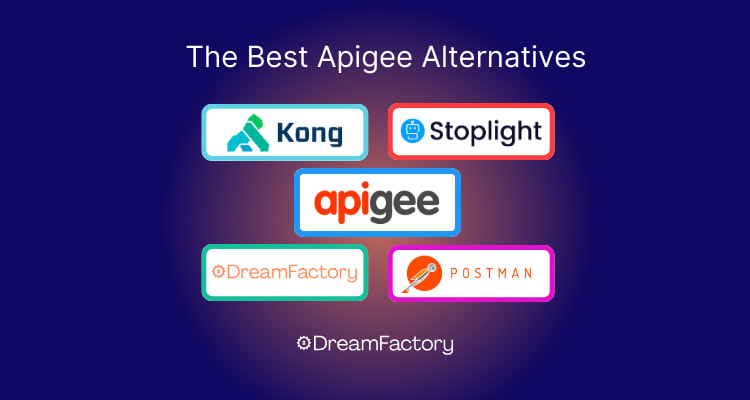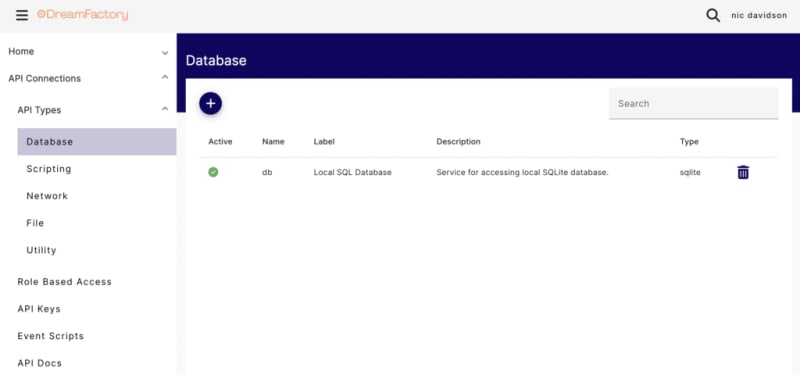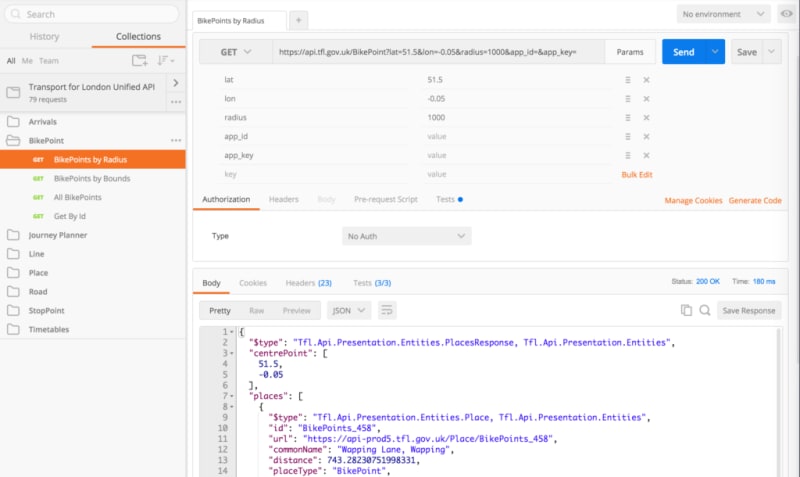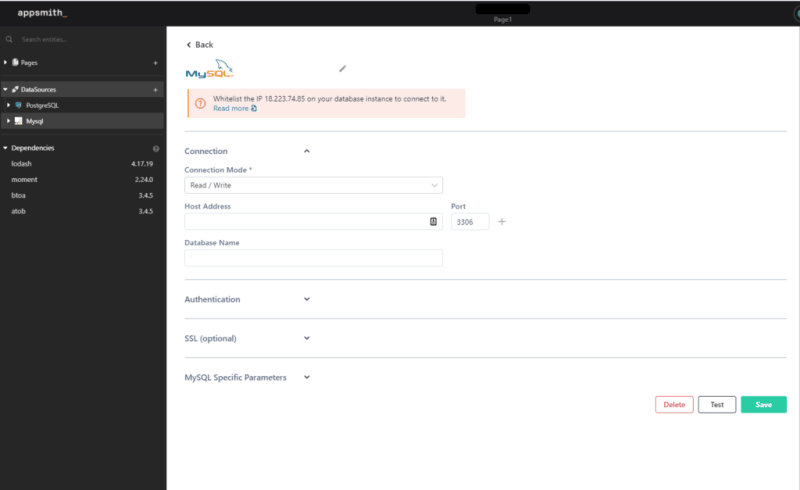Apigee is a cloud-based API management tool. It integrates data from databases, warehouses, data lakes and SaaS services. It is a no-code tool making it a valuable asset for citizen integrators and developers alike. However, the platform was initially designed to build APIs for monoliths. It was not designed to handle microservices. Given we are in the age of digital transformation where microservices rule, Apigee may not be suitable for a lot of use cases. In this guide, check out a few Apigee alternatives to discover the best solution for your team.
Table of Contents
What is Apigee?
Apigee, acquired by Google Cloud in 2016 and later rebranded as Google Cloud’s Apigee API Platform, is a comprehensive API management solution designed to help organizations build, secure, and scale APIs.
Apigee enables businesses to streamline the process of exposing their digital assets as APIs, allowing for seamless integration with internal systems, partner applications, and third-party services.
Key Features of Apigee
Apigee, a leading API management solution, offers essential features for streamlined API development, including robust security measures, traffic management capabilities, and comprehensive analytics tools. Its developer portal provides a central hub for API exploration, while integration capabilities ensure seamless connectivity with backend systems and external applications.
Apigee supports the entire API lifecycle, facilitates monetization strategies, and fosters developer engagement through community forums and documentation. Built on scalable infrastructure, Apigee ensures high availability and performance for mission-critical applications and services.
Pros of Using Apigee:
- Comprehensive Feature Set : Apigee offers a wide range of features for API management, including robust security, traffic management, analytics, and developer engagement tools, providing a comprehensive solution for organizations’ API needs.
- Scalability and Reliability : Built on scalable infrastructure, Apigee ensures high availability and performance, capable of handling large volumes of API traffic and supporting mission-critical applications and services.
- Developer-Friendly : The developer portal provided by Apigee offers a user-friendly interface for developers to explore, consume, and integrate APIs, fostering collaboration and innovation within the developer community.
- Integration Capabilities : Apigee facilitates seamless connectivity with backend systems, cloud services, and external applications, supporting various protocols and standards for interoperability.
- API Lifecycle Management : Apigee supports the entire API lifecycle, from design to retirement, with features for versioning, deployment, testing, and documentation, enabling organizations to manage APIs effectively.
- Analytics and Monitoring : Apigee provides robust analytics and monitoring tools to track API usage, performance metrics, and user behavior, empowering organizations to gain insights and optimize their API strategies.
Cons of Using Apigee:
- Cost : Apigee can be relatively expensive, especially for small or mid-sized businesses, with pricing based on usage and additional features such as analytics and monetization.
- Learning Curve : Due to its comprehensive feature set, Apigee may have a steep learning curve for new users or organizations unfamiliar with API management concepts, requiring time and resources for training and implementation.
- Complexity : Managing and configuring Apigee’s extensive features can be complex, particularly for organizations with limited technical expertise or resources, potentially leading to configuration errors or suboptimal setups.
- Vendor Lock-In : Choosing Apigee as an API management solution may result in vendor lock-in, limiting flexibility and interoperability with other platforms or solutions in the future.
- Support and Maintenance : While Apigee offers support services, organizations may encounter challenges with timely support responses or resolution of issues, particularly during peak times or critical incidents.
- Customization Limitations : Despite its flexibility, Apigee may have limitations in terms of customization, requiring organizations to adapt their workflows or processes to fit within the platform’s framework.
While Apigee offers a powerful and feature-rich API management solution, organizations should carefully consider their specific needs, resources, and budget constraints before committing to its implementation.
The Top 9 Apigee Alternatives
In the following section, we’ll be covering the top 9 Apigee alternatives.
1. DreamFactory
Rating: 4.5/5 on G2
DreamFactory is the easiest way to automatically generate, publish, manage, and secure REST APIs, convert SOAP To REST, and aggregate disparate data sources through a single API platform. It’s sort of like Hasura, but for REST APIs!
Instantly generate APIs from any database with built-in enterprise security controls that operates on-premises, air-gapped, or in the cloud.
DreamFactory also generates a comprehensive REST API for SQL, NoSQL, file storage, email, and push notifications. You can securely call any web services, including custom-built REST APIs and SOAP services. DreamFactory generates and publishes your new REST API in seconds and with live API docs.
DreamFactory also provides server-side scripting with the V8 Javascript Engine, Node.js, PHP, and Python. DreamFactory makes it easy to write server-side scripts and attach your scripts to any API request and response event.
DreamFactory makes pricing easy, it offers a free open source version, but scales based on your business needs.
Never build an API again. Get the backend you have been dreaming of created & deployed instantly. Using DreamFactory, you’ll save time and money. As one of our customers points out, “DreamFactory has saved us countless development hours by providing an extremely easy way to bridge our data sources.”
2. Kong
Rating: 4.4 out of 5 on G2
Another Apigee alternative is Kong, which is an open source platform. This makes it ideal for teams looking for complete control over customizing the tool. The strong community of developers means tons of support and plenty of free plugins. The plugins improve the overall reusability of a lot of logic of the API gateway.
As an open-source solution, the basic version is free. However, there is a paid version that offers more support options. One of Kong’s biggest advantages is that it comes with prebuilt containers such as Docker and Vagrant. So companies with established CI/CD processes can integrate it into the deployment process quickly.
One notable downside is that novice users may have some trouble getting used to the tool, as one reviewer says “The interface still can be quite daunting for a novice user.” When you’re looking to get going quickly, Kong can become a bottleneck in that regard.
3. Postman
Rating: 4.6 out of 5 on G2
If you want more flexibility in team collaboration, Postman is a strong Apigee alternative. Commenting, forking, branching, pull requests version control and more enhance the collaboration experience. Postman allows teams to mock API responses without having to set up a backend. One user says it best:
“The best thing I like is that we can easily create Mock API, which is very useful in the application development when we don’t have an actual REST endpoint”
The downside to Postman is that it has limited integration capabilities. As this reviewer reports: “It could have better integrations for other types of APIs like SOAP, GraphQL.” This limitation creates an obstacle in connecting the tool with other systems. However, it is an open-source solution that may be an attractive option to some. There is also a paid version that offers more features.
4. Stoplight
Rating: 4.4 out of 5 on G2
Stoplight is a design-first API development tool. So it is a much faster and more effective API development approach. The ability to export OpenAPI files and import them to a development environment gives it an additional advantage. It also supports API linting and mock testing.
Whether you are a product manager, architect or developer, you can create and prototype APIs without getting bogged down in code. The tool also works directly with design artifacts on Git.
Although there are plenty of good things about Stoplight, it has some downsides that prevent it from being a good Apigee alternative. For one, many users find the UI confusing. Some say “The interface design needs some improvements.” and that “The editor can be a little confusing at times”
5. Appsmith
Rating: 4.7/5 on G2
Appsmith is an open-source tool, adept at crafting visually engaging and functional internal applications, integrated with various data sources. It’s ideal for creating internal tools like customer support portals, sales dashboards, and data management interfaces, offering rapid development for varied internal needs.
Core Features of Appsmith:
- Enables improved access control, version management, and collaborative development with Git hosting.
- Provides detailed tracking of user activities and events, essential for monitoring, troubleshooting, and compliance.
- Allows setting specific access permissions based on roles and groups for various application components.
While Appsmith offers many ready-to-use features, its customization scope for complex or specific needs might be limited, which could restrict tailoring applications to exact business requirements.
6. AWS AppSync
Rating: 4.3/5 on G2
AWS AppSync, a serverless GraphQL service, facilitates the development of mobile and web applications. Its strength lies in enabling the creation and management of real-time data subscriptions, coupled with the capability to maintain app data access even when mobile devices go offline.
Some of AWS AppSync’s key features:
- AppSync enables the creation of customizable GraphQL APIs, offering versatile and efficient data management.
- Offers seamless integration with AWS services like DynamoDB, Aurora, Elasticsearch, and Lambda, enhancing data storage and processing.
- Features offline data sync, ensuring app functionality and data consistency without internet connectivity.
- Supports real-time data access and updates, essential for apps needing instant data interaction.
- Provides comprehensive querying, search, and filtering options, ideal for efficiently managing large datasets.
AppSync’s integration with GraphQL and various AWS services can however present a steep learning curve, especially for developers unfamiliar with GraphQL or AWS ecosystem.
7. Talend
Rating 4/5 on G2
Talend is one of the most popular Boomi alternatives available in both open source and enterprise editions. This platform has a strong focus on Big Data analytics, so if this area of IT is critical to your business, you might consider it for your business operations.
Key Features of Talend
Talend has many benefits, including:
- Improved data quality – Talend helps you improve your data quality through its ETL (extract, transform, load) capabilities.
- Easy to use – This platform has an intuitive design that allows users to connect their applications with different cloud-based tools in no time. It also features visual development tools for non-technical business users or IT professionals who don’t want to write code themselves.
- Multiple price points – Talend offers a free open source edition with limited functionality and an enterprise edition for purchase. These allow businesses to choose the correct version based on their requirements and budget.
- Large community – This Boomi alternative has a large community of users that share knowledge and experience to help each other out. This network makes it much easier for new users to get started with the platform and ensures that existing users always have access to support.
8. Mulesoft
Rating: 4.5/5 on G2
Mulesoft is one of the most common Boomi alternatives for businesses looking to integrate their systems and data without writing any code. It features easy-to-use visual tools with drag & drop functionality to quickly set up connections between different applications. The platform also provides high availability in backup services and performance monitoring across cloud or on-premise deployments. Another benefit of this Boomi alternative is its support for almost 300 connectors available out-of-the-box, such as Salesforce, Marketo, etc.
Key Benefits of Mulesoft
Some of Mulesoft’s many benefits are:
- Scalability – With Mulesoft, you can quickly scale your application infrastructure. Mulesoft is great for enterprise-level applications and can scale to meet the needs of large organizations.
- Secure – Mulesoft has built-in security features that make it perfect for large-scale enterprise operations.
- Connect apps and data – Mulesoft has a vast amount of out-of-the-box connectors like Marketo, Salesforce, etc., making it easy for users to connect their applications with different enterprise tools in no time at all.
9. Jitterbit
Rating: 4.6/5 on G2
Jitterbit provides a combination of data integration (ETL) and API integration capabilities, including several pre-built API integrations for popular SaaS solutions, apps, and microservices. Additionally, the platform offers tools for creating ETL Pipelines for data integration scenarios, such as the Jitterbit Cloud Data Loader (JCD), which manages Salesforce data connections. However, unlike MuleSoft, Jitterbit does not offer an ESB product.
As an API integration platform, Jitterbit offers an intuitive, point-and-click interface at a more affordable price than MuleSoft. It simplifies the process of exposing ODBC or JDBC databases as APIs, and it also includes an automatic REST API generation tool, similar to DreamFactory. This tool speeds up the development process and reduces labor costs.
Key Features of Jitterbit
- API integration: Jitterbit supports API integration with popular SaaS solutions, apps, and microservices. It offers a visual, point-and-click interface to simplify the process of exposing data as APIs.
- Pre-built integrations: Jitterbit comes with several pre-built API integrations for popular SaaS solutions, such as Salesforce, NetSuite, and Workday, which can help save development time and effort.
- ETL pipeline development: Jitterbit offers tools for creating ETL pipelines, such as the Jitterbit Cloud Data Loader (JCD), which helps manage Salesforce data connections.
Generate your No Code REST API now
While each of these Apigee alternatives is good for API management, many are not user-friendly. And so getting maximum use out of them will be challenging. Some users may struggle to do simple tasks. Compare that to DreamFactory that features a visually appealing and user-friendly tool that allows you to manage APIs with ease.
The right platform can streamline the way you manage your business’s APIs. DreamFactory gives you a host of useful features including API mocking, instant API creation and rapid prototyping and a suite of security controls.
Start your free 14-day free trial with DreamFactory to discover how a top API program can help you streamline your API management.
Related Reading
5 Reasons Why Your Business Needs APIs
The post The Top 9 Apigee Alternatives first appeared on DreamFactory Software- Blog.
















Top comments (0)